
BUMPER EDITION!
Thanks for coming along

⚡️ View the latest digest and the full archive here.
📐 My Goals ℹ️ Donations Page & Status 📸 MPP Status 🛍️Shop

It's not too late for a Christmas Gift Membership
The Alternative Christmas Stocking Filler.
More DetailsWray Castle and the Langdale Pikes, Cumbria.

Consult the genius of the place in all;
That tells the waters or to rise, or fall;
Or helps th’ ambitious hill the heav’ns to scale,
Or scoops in circling theatres the vale;
Calls in the country, catches opening glades,
Joins willing woods, and varies shades from shades,
Now breaks or now directs th’ intending lines;
Paints as you plant, and, as you work, designs.
Alexander Pope

Prospect and Refuge
Knaresborough in Yorkshire is a very special place. If there were to be a town that held all the ingredients to spirit of place, it might be this one. Every architect and town-planner should spend some time in Knaresborough.
Knaresborough isn’t just a collection of buildings; it’s a place where architecture and landscape have grown together over centuries. It isn’t just about the buildings, but how the buildings relate to and define the spaces around them. The genius of this place is revealed in how its inhabitants shaped the land to serve their needs, while letting the land shape them in return; creating spaces that hold memory, connection, and a sense of belonging.
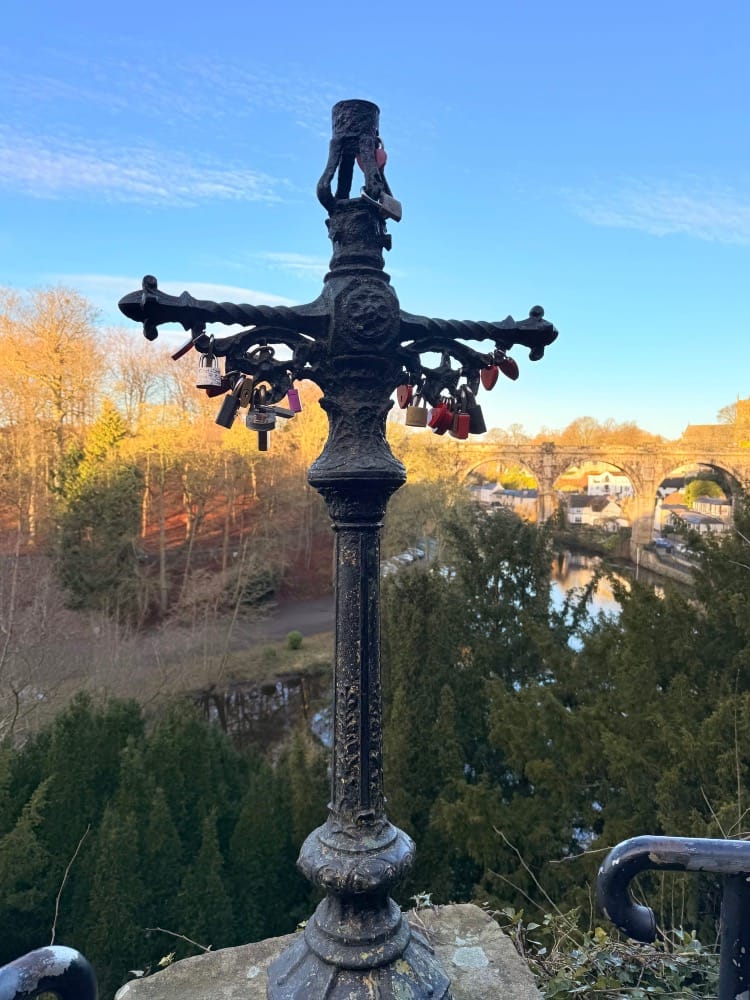
Walking from the town square to the castle, and then down to the river, feels like a journey in miniature—a shift in perspective from the close and familiar to the vast and expansive. The castle, perched high on its cliff, is where the tangible meets the intangible, where solid stone meets open sky. This sharply defined and ornamented edge speaks to a deep human instinct: the exhilaration of the precipitous, balanced by the reassurance of firm ground and the comforting presence of the town behind. Prospect and refuge.

From here, we are momentarily transported to a child-like state, peering down as though into a snow globe, tracing the small vignettes of daily life unfolding within a miniature world.

At the centre of our microcosm is the River Nidd which winds through the town and the imagination, framed by the imposing arches of the viaduct. The viaduct isn’t just a bridge. It’s a marker of the town’s ingenuity, a reminder of its connection with the wider world. It feels symbolic—a quiet reminder of resilience, of how we overcome barriers, both physical and imagined.

Beyond the viaduct, the landscape softens into something dreamlike. Mother Shipton’s Cave beckons with its legends and magical petrifying springs.

Here, the boundaries of reality blur, as though the town has kept one foot in the everyday and the other firmly planted in myth. It’s a space for the imagination to wander, for stories and identities to take root.

Knaresborough doesn’t just invite you to look—it invites you to participate and engage. It’s a place where architecture is not merely about providing shelter but about shaping identity, grounding us, and offering space to dream. This place is thriving because it holds onto its stories and celebrates them by weaving them into place. People here feel a part of something.
What we see before us in Knaresborough is the aggregate human attempt to live in safety, peace, comfort and thrive. Places like this are rare and precious. They are rich with layers of meaning, alive with the echoes of those who came before, and waiting to inspire those yet to come.



It feels cold, so I put my fingerless gloves on and pull my hood up around my neck. I'm a bit like a cat today—walking along the edges of Knaresborough Market Square, observing the life of this place, the hustle and bustle on a festive day.

I look into my bag, unzip my pencil case, and pull out my concertina sketchbook. When I'm sketching, I always find a place where I have both prospect and refuge. I find a bit of rustication to lean against—a big sandstone building that helps me feel grounded. The view before me isn’t of any particular importance: the shops veer off to the left, and a temporary metal fence blocks the road into Market Square.
When I finish inking the buildings, I start to pull together the lines for the pop-up coffee trailer. The barista is busy at work—I only catch glimpses of her profile now and then. I stand and watch her at work - always a smile and a comment to the customer.
A man with a backpack compliments her coffee and wanders into the market, while a father in a cap and hoodie proudly pushes a trolley along the setts. A woman walks over to the baby and says hello, then walks out of the marketplace. She's wearing a white coat and a red jumper with a star on it. Another man stops, pauses, smiles—and then decides to get a coffee.
Above them, the windows with the gibbs surrounds, the Flemish bond, and the pantiles are defined by the late winter sun.

Knaresborough, Yorkshire.
The Castle

Perched precariously upon a cliff above the River Nidd, the remains of Knaresborough Castle rise from the ground like a termite hill.
Much of the ashlar has been taken away and repurposed in other buildings around Knaresborough, but the core survives in parts. Originally of Norman origin, the castle was largely rebuilt in the 14th century and famously provided refuge for Hugh de Moreville and his associates after the assassination of Thomas Becket. The castle was ordered to be dismantled after it was captured by the Parliamentarians during the English Civil War, but a rump remains.



The Viaduct & Railway Station

The Knaresborough Viaduct, completed in 1851 by Thomas Grainger, after an earlier collapse, spans the River Nidd, harmonising with the castle through its castellated design.
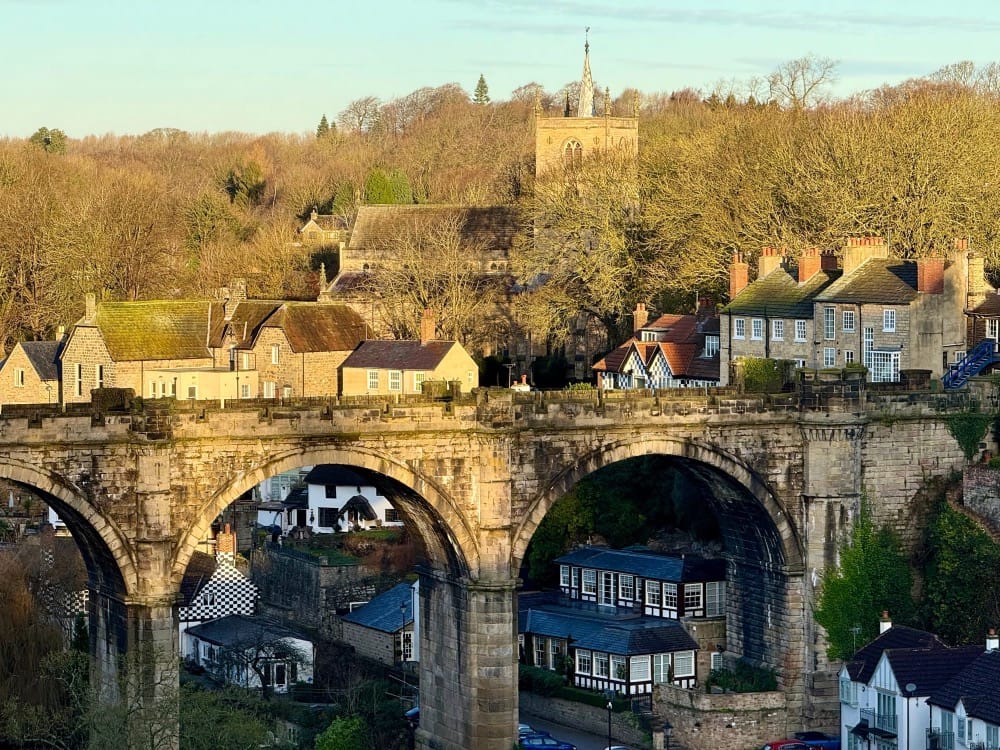
The viaduct seems to weave its way into every view and vista. The style is a connection and reflection of the castle opposite - an act of continuity.






Nearby, the railway station, with rock faced facade and decorative platform awning, is evocative of a gentler era of travel. What is so lovely about the station is that it feels integral to the town - passers by can walk across the tracks and look across the top of the viaduct that they walked under only a matter of minutes before.



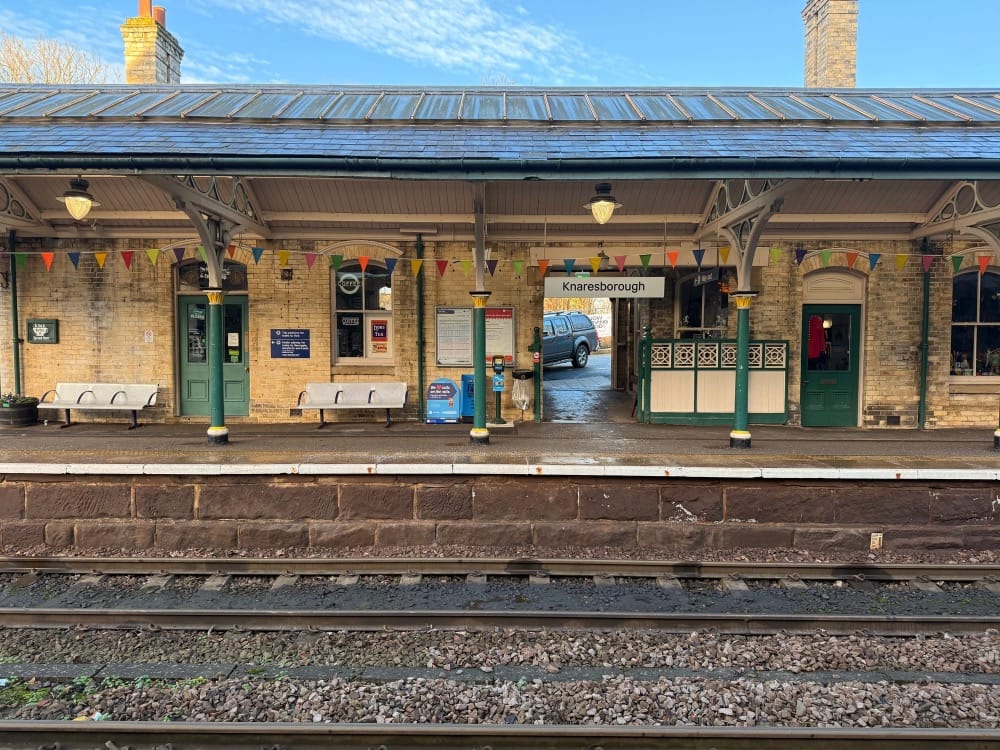
The scale and the design is human and sociable.

Adding intrigue, the signal box (still in use) is uniquely attached to a terrace of houses.


The Church

St. John the Baptist Church in Knaresborough, was established in the C12, when King Henry I granted the "Church at Cnaresburgh" to the canons of Nostell Priory.
It was originally dedicated to St. Mary but was rededicated during the 16th-century Reformation. The church suffered destruction during Scottish raids in 1318 and was later restored - but there is much of the original that survives.
The church is situated between the viaduct and the train station. A holy trinity of delightful, accidental circumstance.
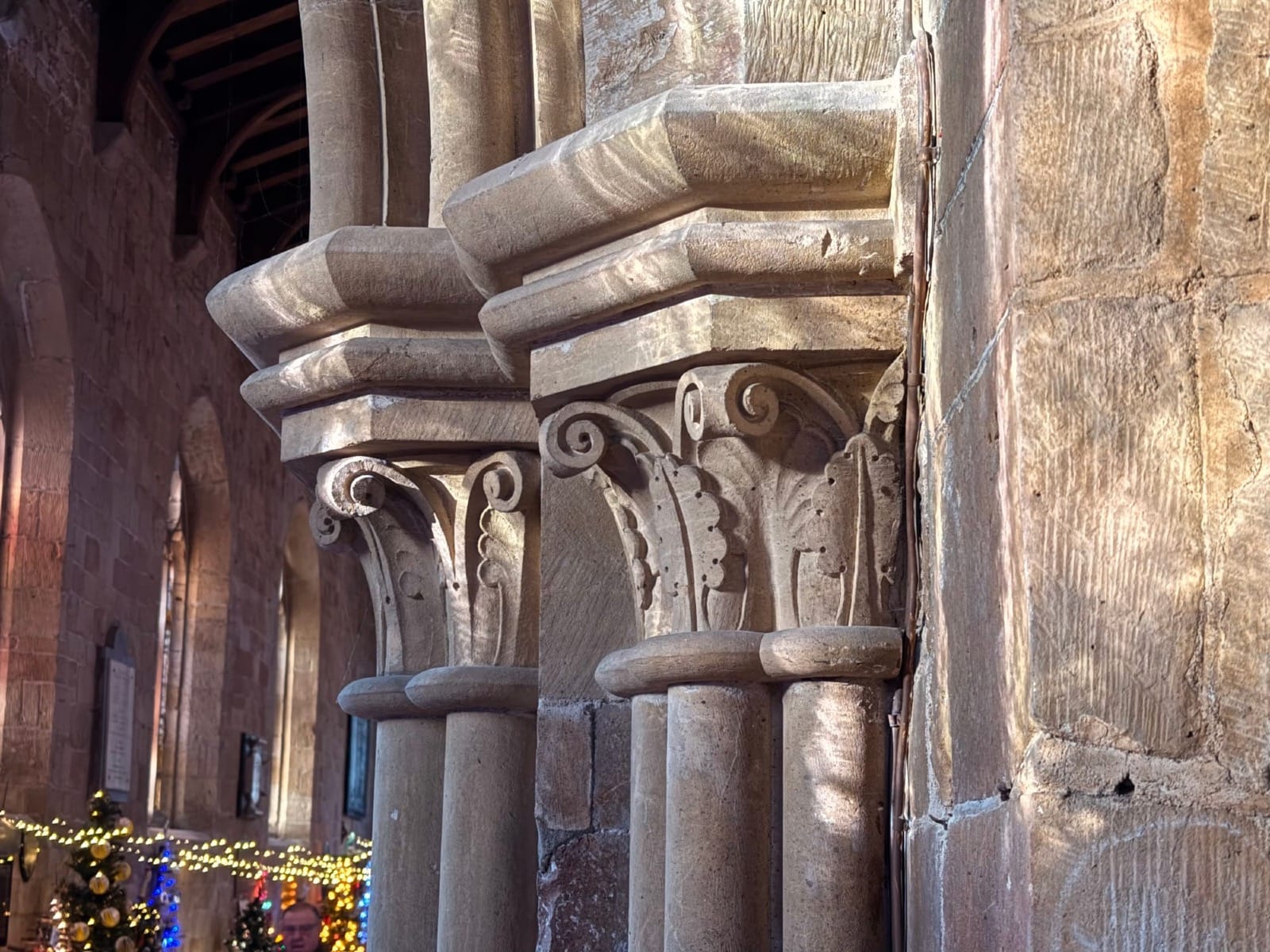

The Christmas Tree Festival

The Christmas Tree Festival is a microcosm of the community. I thought I would share a few of the entries with you.


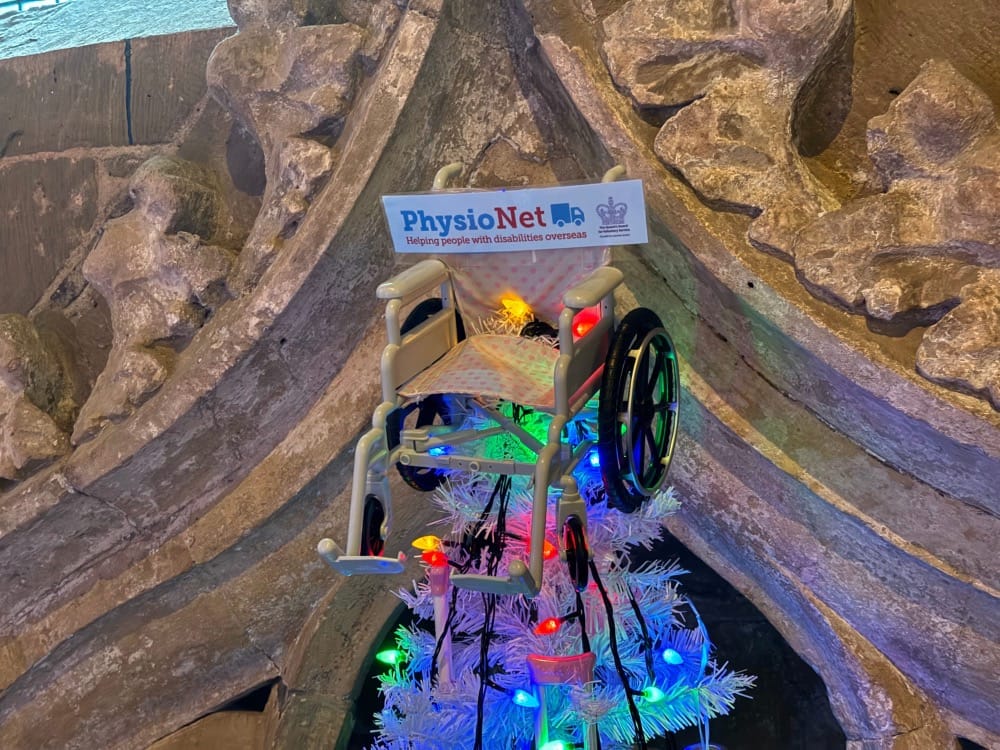

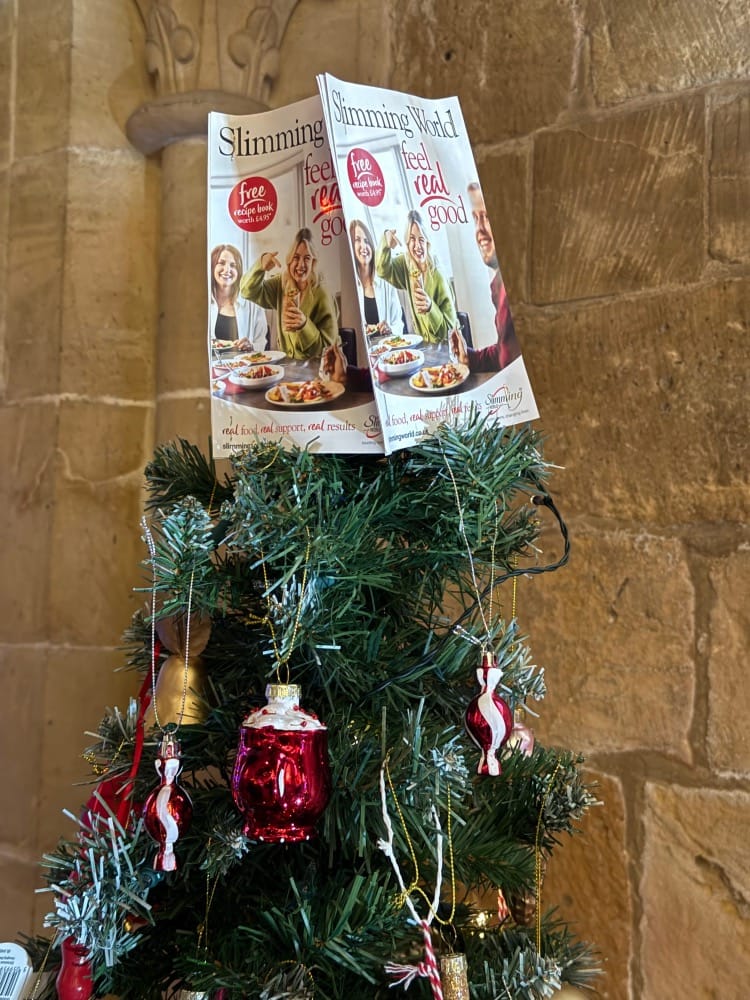



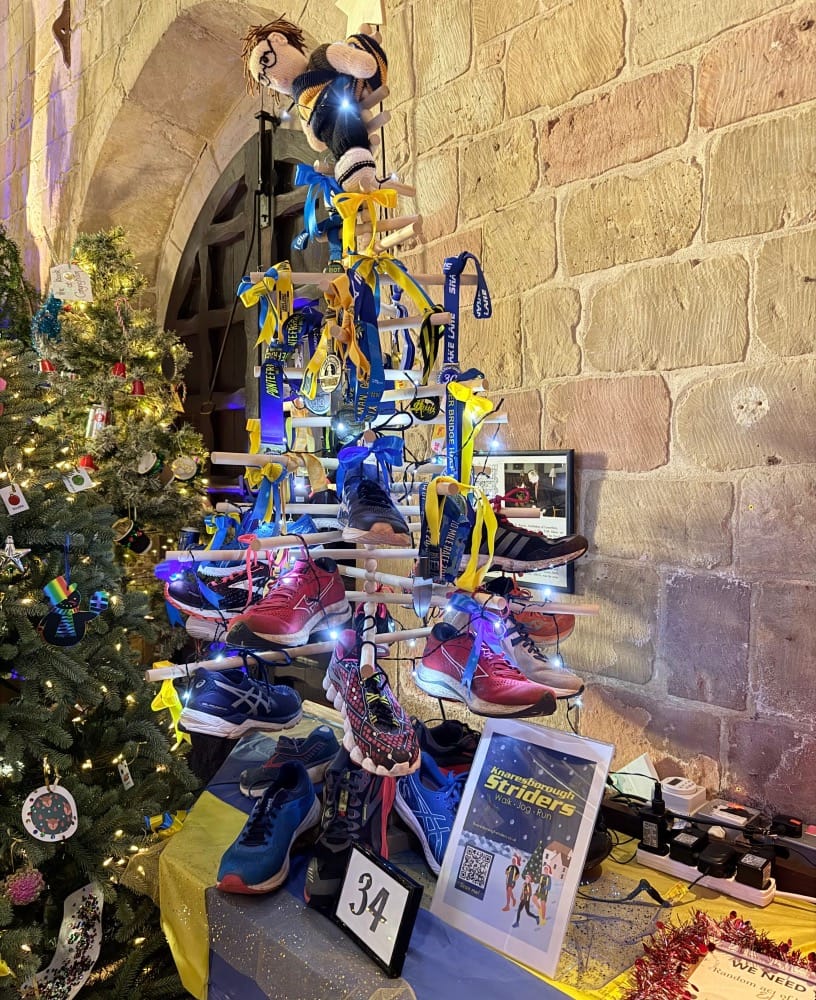


The Market

Although a market was recorded in Knaresborough as early as 1206, it was not until 1310 that Edward II granted the town a Royal Charter to officially hold one. To this day, a market continues to take place every Wednesday in the Market Square.
Last weekend I visited the annual Christmas market at Knaresborough.













The Bakery
Set on a corner spot - check out the kneelers to the roof - the stone sections that stick out from the gable like ears - a bit of northern vernacular - as are the pies. Hirsts is a lovely traditional bakery.




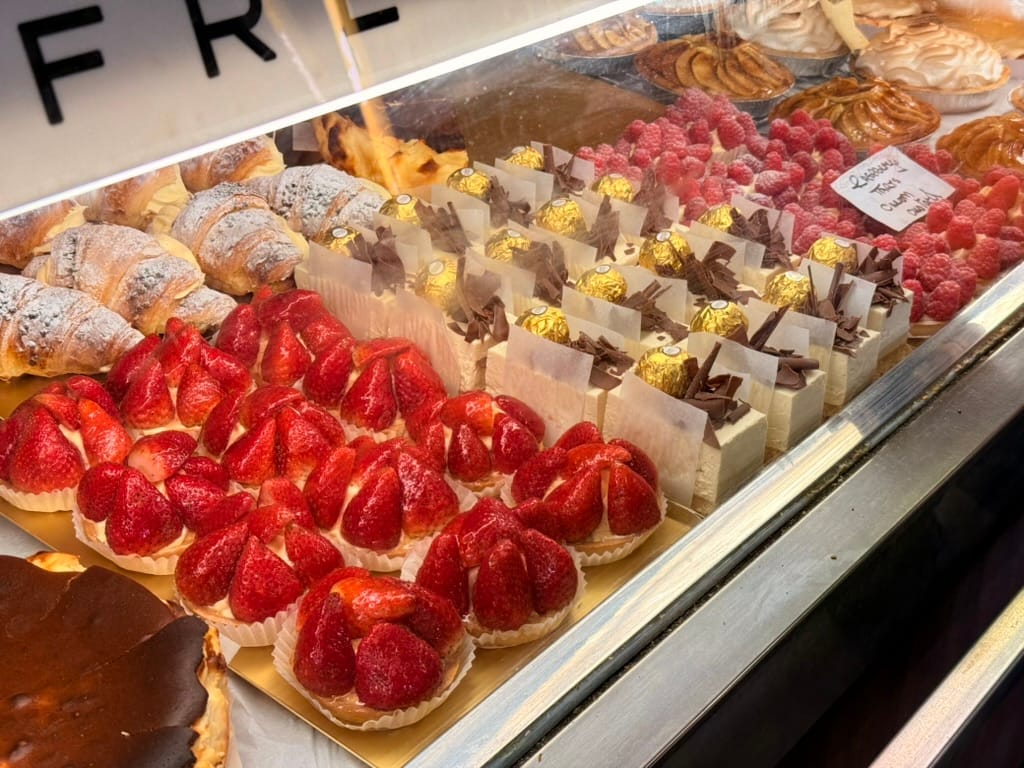
The Pub

Blind Jack's is situated in Market Place and is a lovely example of a mid C18th former domestic residence.
There is a cast lead rainwater head to the front with letters ' H ' and '1741' with crown motif. To think that it has survived and functioned all of this time.

The pub is named after John Metcalf, famously known as "Blind Jack of Knaresborough," the pub pays homage to this remarkable 18th-century figure. Metcalf, born in 1717, lost his sight at the age of six due to smallpox. Despite his blindness, he became a pioneering road builder during the Industrial Revolution, constructing approximately 180 miles of roads across northern England.
Isn't it remarkable how we celebrate our people and tell stories of resilience through our buildings? Knaresborough is storied in more ways than one.
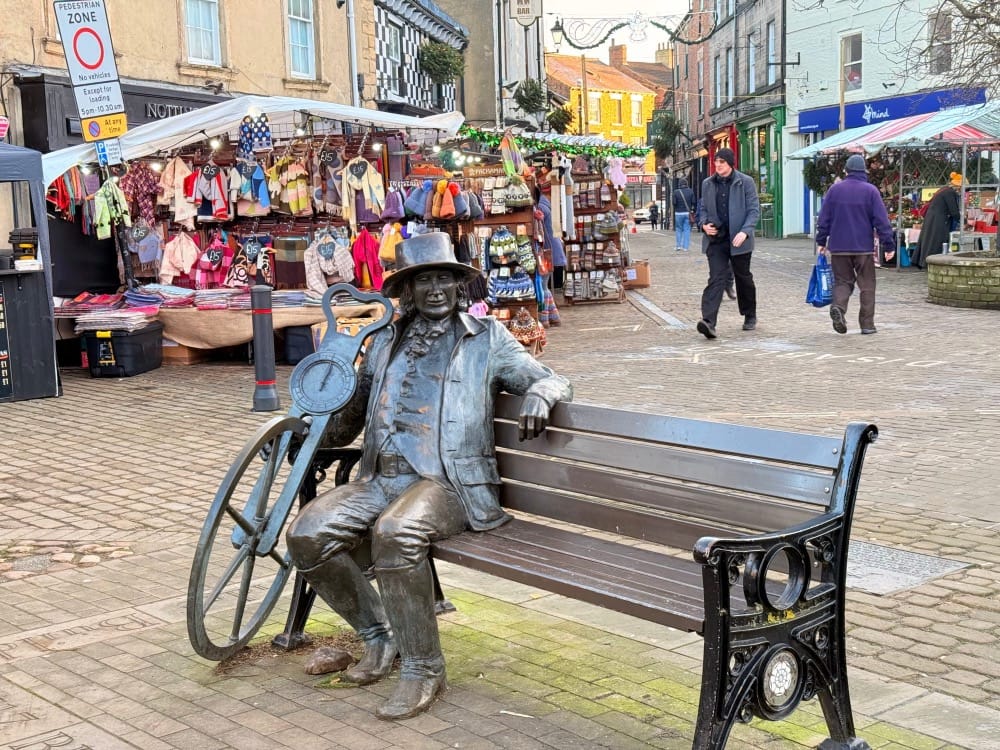
I did spend some time in here! Working on a sketch of the market I had started - my hands were cold and I needed to find a warm place. Ahem..




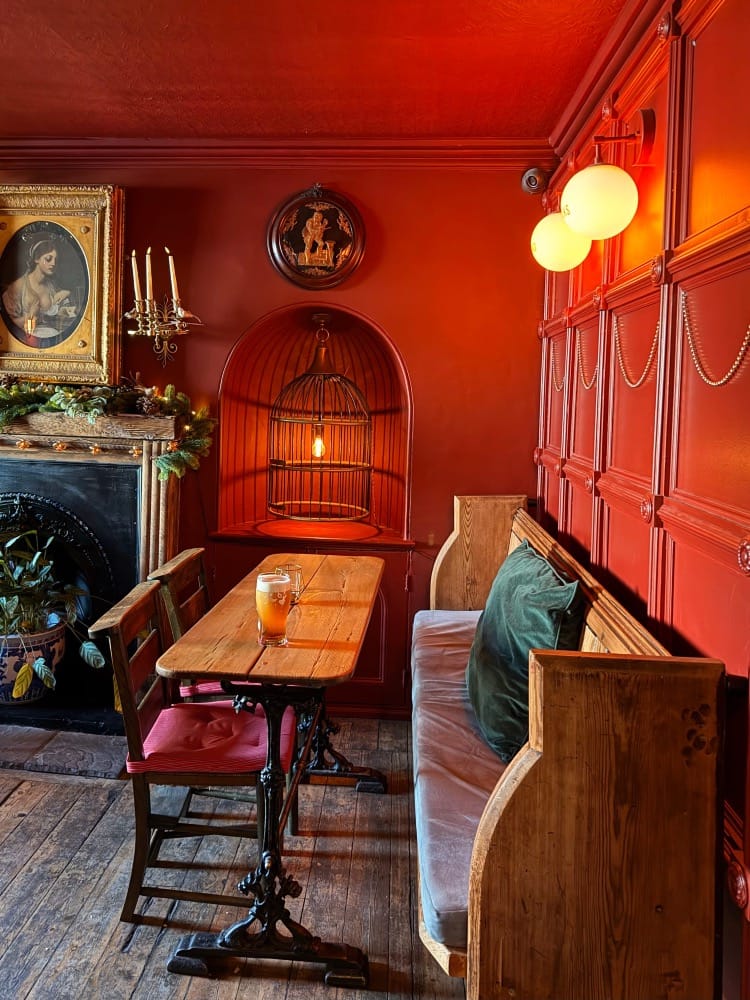



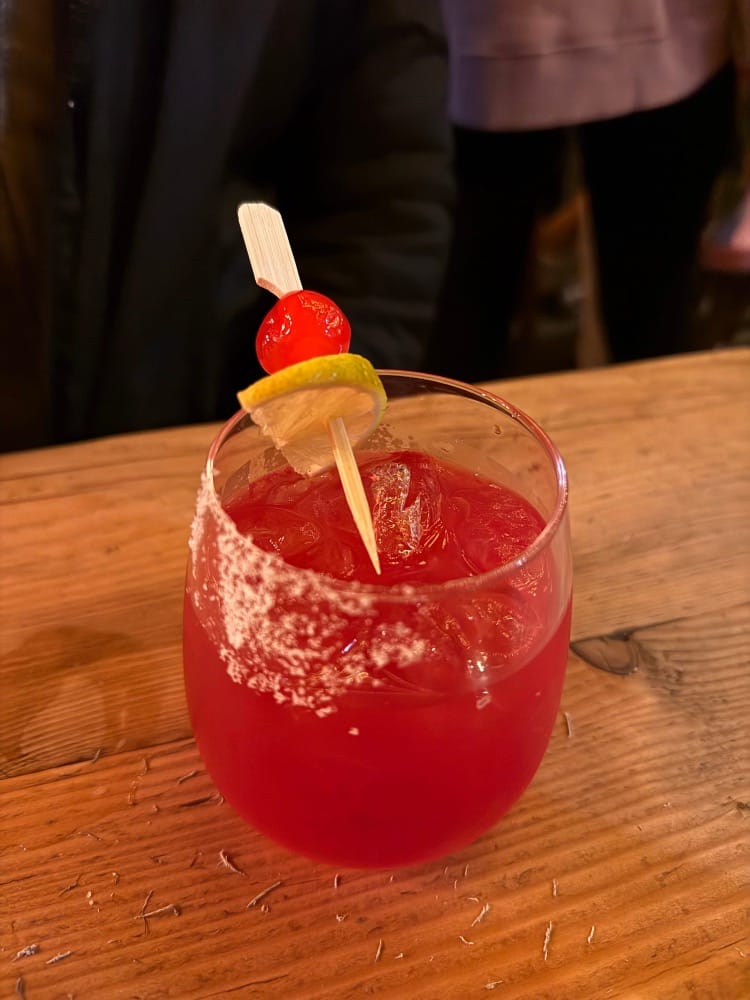
The Buildings of Knaresborough (Pure Scroll)
No words pure scroll - enjoy!
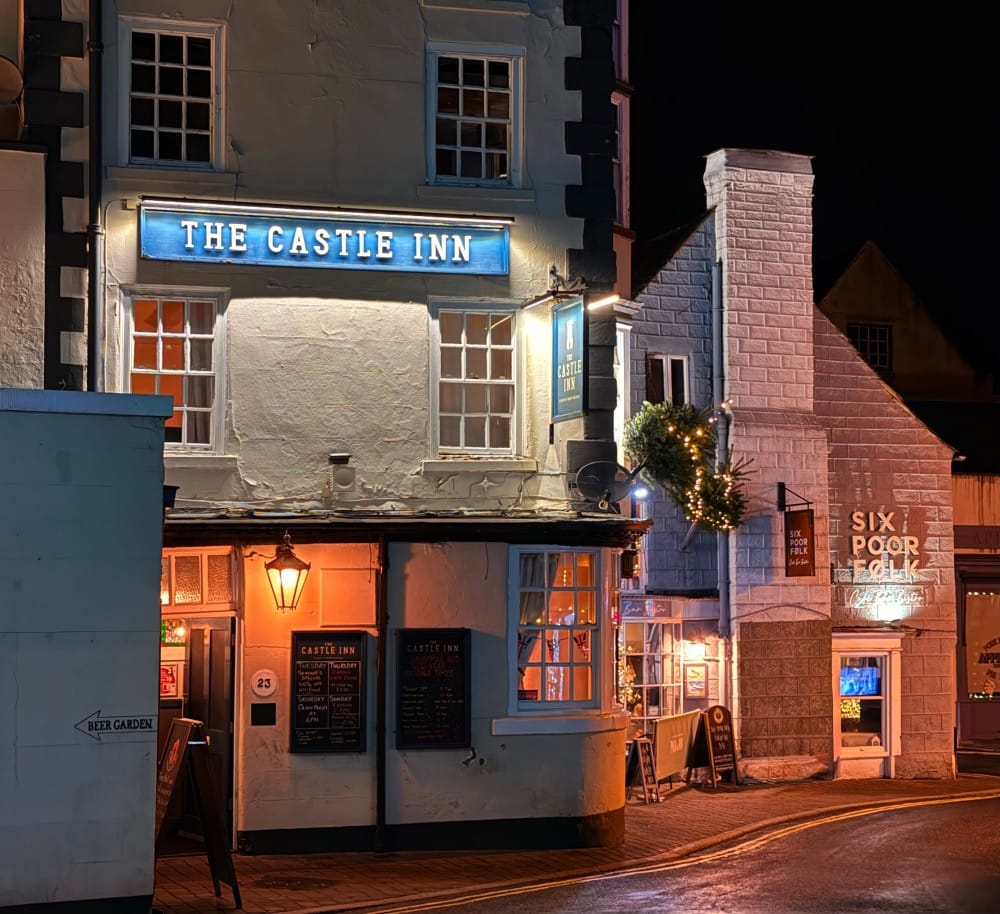









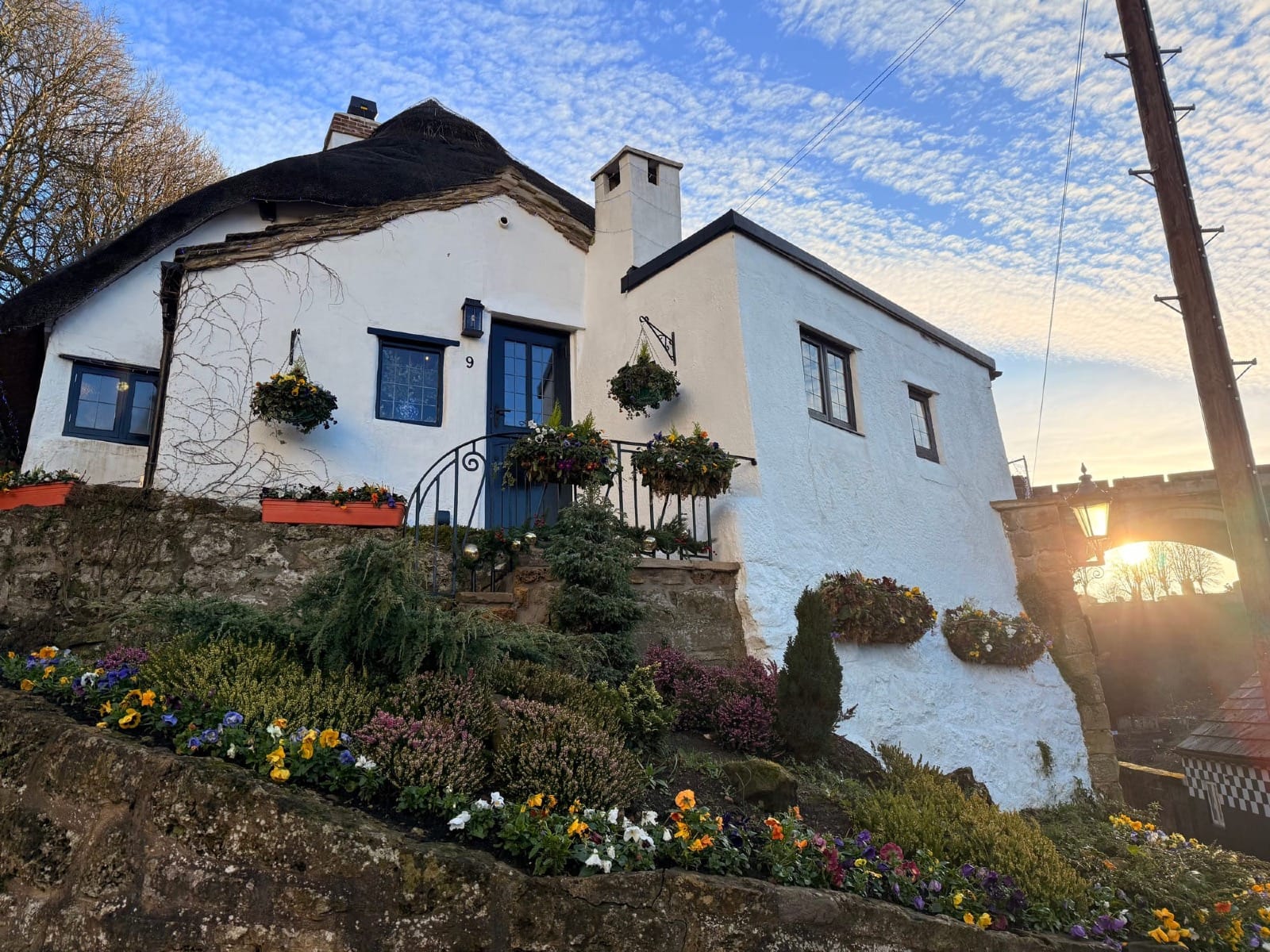





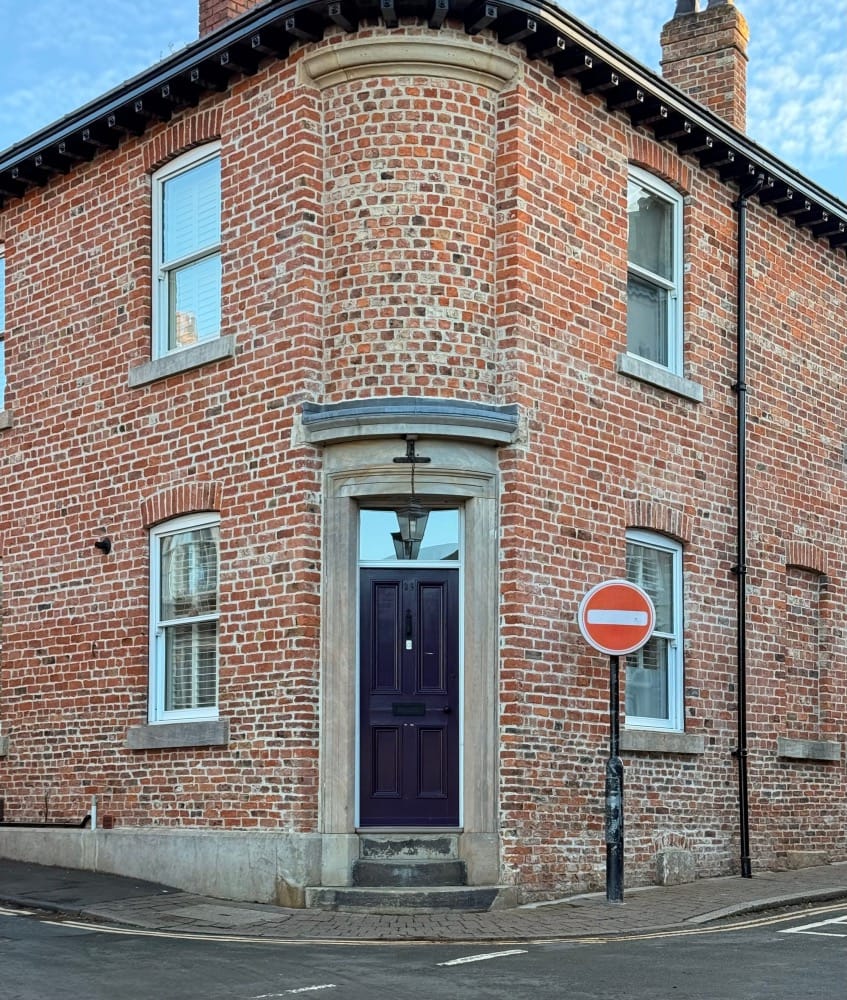

















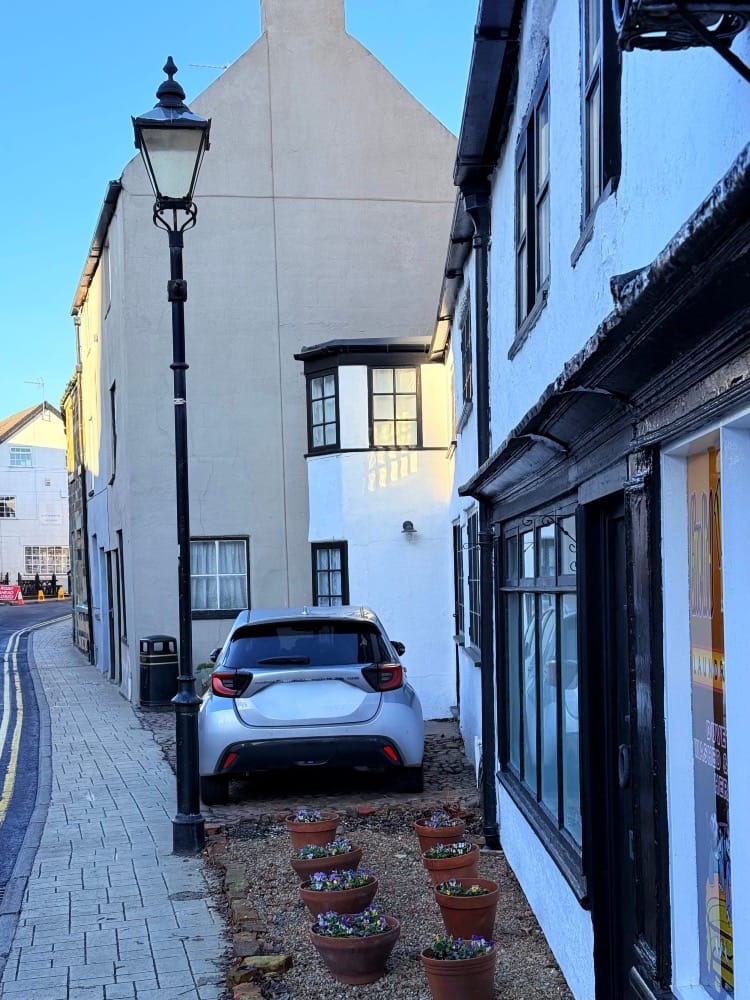

It's beginning to look a bit like Christmas in Woody..


V'envy





Stranded in Knaresborough for Christmas...


Topography plays a huge role in how we experience places none more so than in places like Edinburgh and Richmond, Yorkshire.
Another dynamic place which is impacted by a river like Knaresborough is King's Lynn - but its buildings and streets are shaped by the maritime.
If you love a bit of festive twilight - you might like to visit Ludlow and York at Christmas time..



Recent Digest Sponsors:


Wishing you a Happy Christmas!
Thanks for all your support, I'm so grateful.

Atelier - My Art Shop
Visit My Art Shop
Do you know of a company or firm that might be able to sponsor the digest? Sponsorships are now going towards Member Powered Photography and recorded on the Donations Page.

Sponsor a Membership and get your own landing page on the Digest
More information here
Thank You!
Photographs and words by Andy Marshall (unless otherwise stated). Most photographs are taken with Iphone 14 Pro and DJI Mini 3 Pro.








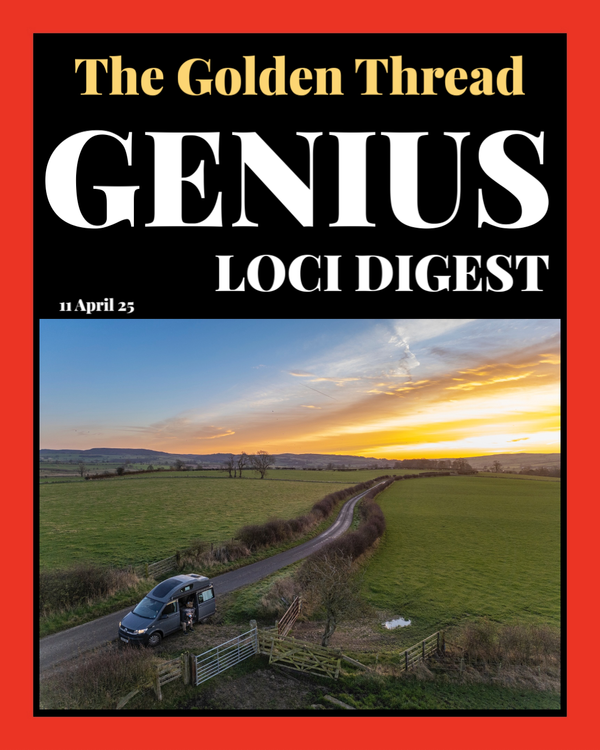
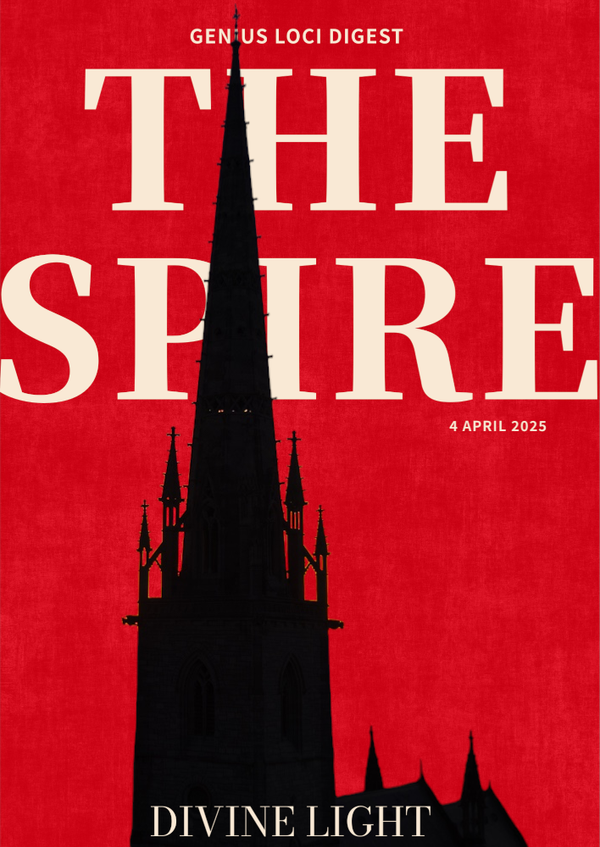
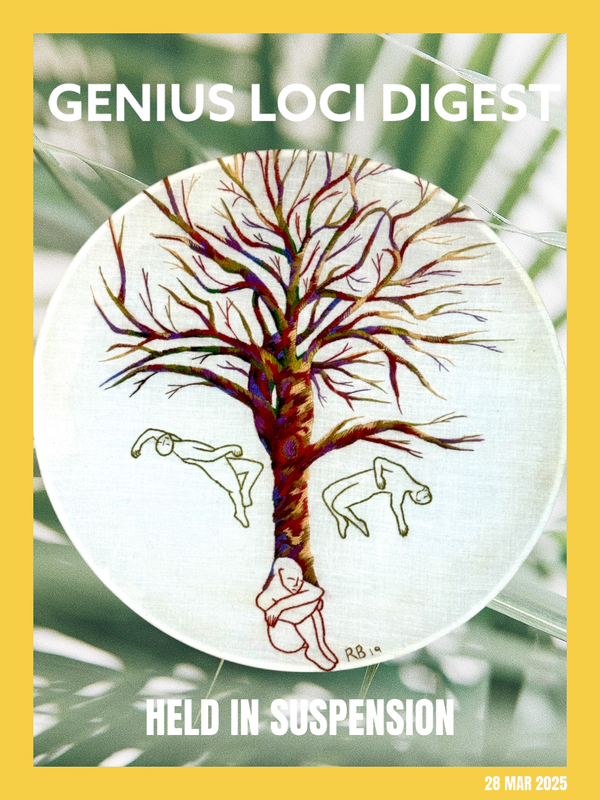

Member discussion